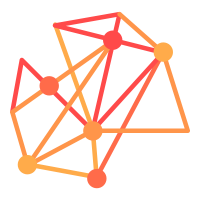

( Image source)īut why would you ever want to use a multilayer PCB in the first place? Here are a few solid reasons: Check out the image below to get a visual on how this all comes together in an 8-layer PCB.Īn 8-layer stack with plenty of room for high speed signals. These types of boards take advantage of multiple cores, which consist of a symmetrically balanced structure of alternating copper layers and insulating prepreg material. Once you r frequency needs have climbed, you’ll start to live in the world of multilayer PCBs. More layers afford you a lot more than more space to route. While these boards won’t be a focus for this blog, it’s good to know that they still exist, and are usable until you hit a frequency range of 25MHz. Single-layer PCBs are ideal for the most basic devices and include either one or two copper layers (Top and Bottom) for you to lay down components and traces on. These days manufactured PCBs are broken down into two general categories: single-layer and multilayer PCBs. The answer to that question ultimately depends on the specifics requirements of your design. All of these and more can be solved when you make an effort to get your layer stack done right the first time. Without a plan for what materials you intend to use, and in what order they’re arranged, you might find yourself dealing with symptoms like poor electrical performance, increased emissions, and even timing glitches.

After all, isn’t it just describing the basic construction on a PCB with its various layers? While the stuckup might be a simple visual cross-section of your PCB, what it manages to achieve for your design is vital. The layer stackup might seem deceptively simple at first glance.

Point being, as the technology in our PCBs advances, so does the importance of planning out a solid layer stackup before you ever begin your design.įarewell single-layer boards, today’s layer stacks are much more complex. And those days of KHz signals speeds are now in the 28+ Gb/S range. These days, you’ll find PCBs with as many as 50 layers, with components on both sides of your board, and even some nestled in between layers. Gone are the days of PCBs just being single-layer boards with no vias, clock speeds of around 100 kHz, and basic through-hole components. Ready for a new perspective on managing your layer stackup? Let’s take a look at how to get your layer stack done right the first time, every time. So if one of these problems might be plaguing your design project, then this is one step in your workflow that is better left in your domain of expertise. But consider this, an improperly planned layer stackup can lead to nasty issues like excess heat, crosstalk, and impedance mismatching. Getting Your Layer Stack Right the First Time: A Guide for Every EngineerĪre you taking enough time to plan your layer stackup? If you’re like most designers, then you’re probably just figuring out how many layers you need and leaving the rest up to your manufacturer. Getting Your Layer Stack Right the First Time


 0 kommentar(er)
0 kommentar(er)
